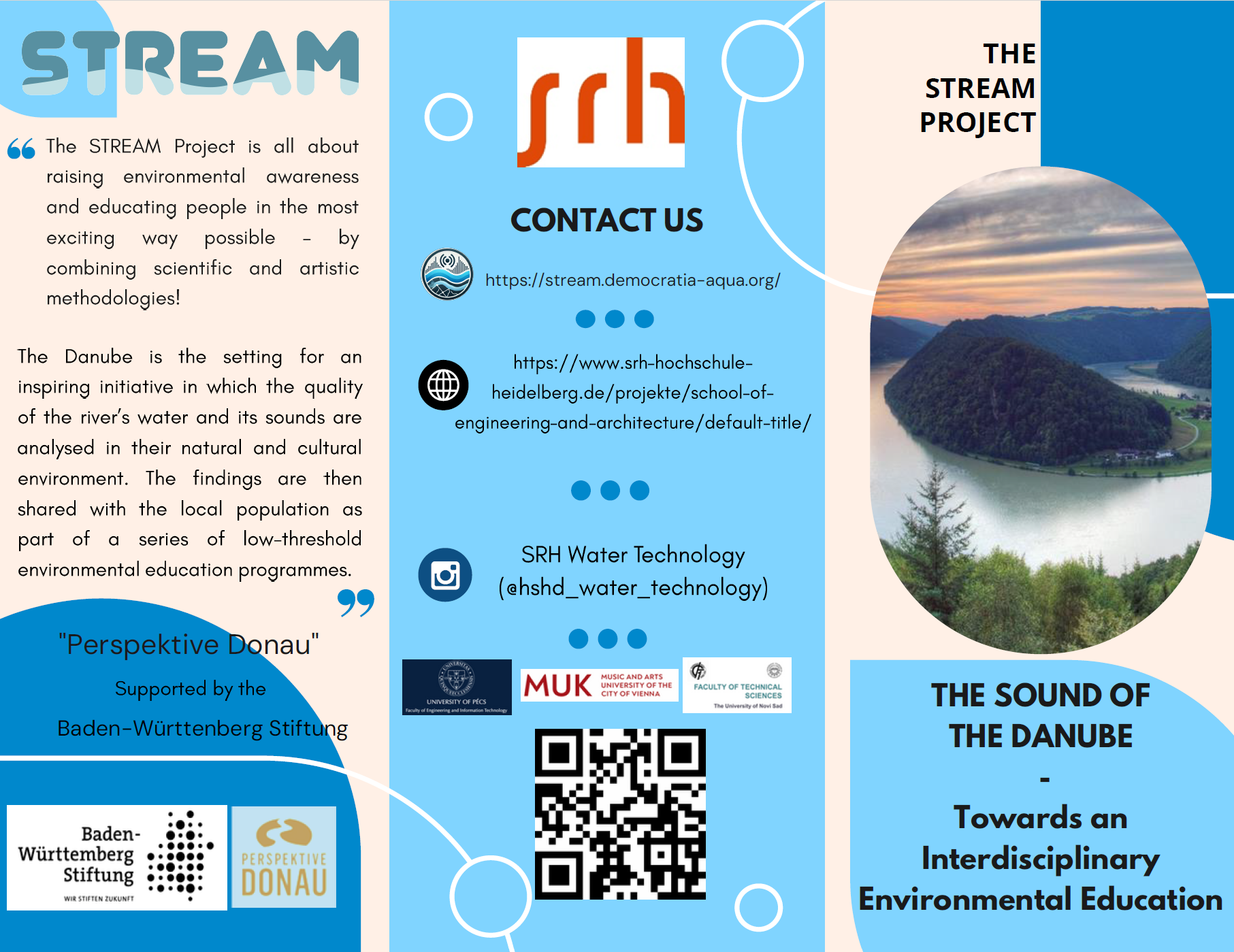Welcome to Stream Project
Project Description
The Danube crosses 10 countries along its course and connects more than 100 million inhabitants and cultures. For thousands of years, it has played a central role as a cultural reference point, as a transportation and trade route and as a central (drinking) water resource. However, the use of the river is quite different in the various Danube states, which is particularly evident in the quality of the Danube water, which deteriorates noticeably along the geographical course of the river. While the Danube in Germany and Austria is predominantly of drinking water quality, intensive industrial and agricultural use of the river in south-eastern European countries results in sometimes severe pollution of the water, for example with pesticides, pharmaceutical residues or heavy metals. In 2022, the “cleandanube” project (funded by the Baden-Württemberg Foundation), in which an activist swam the entire length of the Danube, drew attention to the heavy microplastic pollution of the river.
Especially in times of climate change and increasingly scarce water resources worldwide, it is of fundamental importance to protect bodies of water such as the Danube. To this end, more comprehensive environmental education of the population is necessary in order to strengthen environmental awareness and motivate environmentally friendly behavior. At the same time, however, there is sometimes a lack of general appreciation for the Danube as a natural environment among the population. Measures are therefore also needed to increase people’s awareness of the river as a whole and to make it possible to experience the Danube in its wider significance for culture and nature.
This is where the STREAM project comes in, which is being carried out by the SRH University of Applied Sciences Heidelberg in cooperation with the University of Novi Sad (UNS, Serbia), the University of Pécs (UoP, Hungary) and the Music and Arts University of the City of Vienna (MUK). The transnational project focuses on the Danube along its course from Germany via Austria and Hungary to Serbia, with the overarching aim of making an environmentally and culturally sensitive contribution to water protection. To this end, two different approaches are chosen and combined in the project: an auditory-artistic and a scientific approach. The project thus follows the STEAM approach, in which the STEM subjects (science, technology, engineering, mathematics) are supplemented by arts.
The artistic project approach draws attention to the Danube’s sound environment and uses music and sound recordings at various stations in Germany, Austria, Hungary and Serbia to trace similarities and differences in the river’s soundscape. The Danube thus becomes a cross-border listening experience that is made accessible to the public via a digital knowledge platform.
The scientific approach focuses on researching the water quality of the Danube and communicating science to the general public. By taking water samples, current data on the water quality and pollution of the Danube is collected, which is communicated to the project target groups as part of various measures (including integration of the results into the digital knowledge platform). By combining the scientific and artistic approach, the communication is achieved in an innovative and low-threshold way. Unusual questions such as “Do polluted sections of the Danube sound different from clean ones?” can arouse the interest of the public, offer a new approach to environmental education and inspire people to protect their environment.
Four stations in the Danube states involved in the project are to be visited as part of the project: Langenau, Vienna, Pécs and Novi Sad. Audio recordings of the Danube’s music and sound environment will be made in each of the cities, and water samples will be taken from the river water and analyzed. In cooperation with the partner universities at the respective locations, one-day information events are also offered to the urban public for environmental education about the Danube.
Through information materials, hands-on experiments and discussions with experts from SRH University Heidelberg and the partner universities, interested members of the public will learn more about the sound of the river and the relevance of environmental and water protection. A musical evening program will round off the public events and encourage intercultural exchange.
Based on the data collected (audio recordings, water samples), a digital knowledge platform with a sound map of the Danube will be created in the further course of the project, which will be freely accessible and depict the recorded sounds as well as the results of the water analyses of the Danube. In addition, various teaching/learning materials for environmental education about the Danube will be produced, some of which will be made available to the public online and some as print products.
To support the sustainable impact of the project, a capacity building workshop will be held at the SRH University Heidelberg. Representatives of civil society organizations and environmental associations from the countries involved in the project who are committed to water as a resource will be invited to a hybrid workshop to enable them to network transnationally and to train them in the dissemination of environmental education and the use of the newly developed materials. In this way, the project will also have a multiplier effect beyond the project period and can have a lasting impact on education and commitment in the Danube countries involved.


